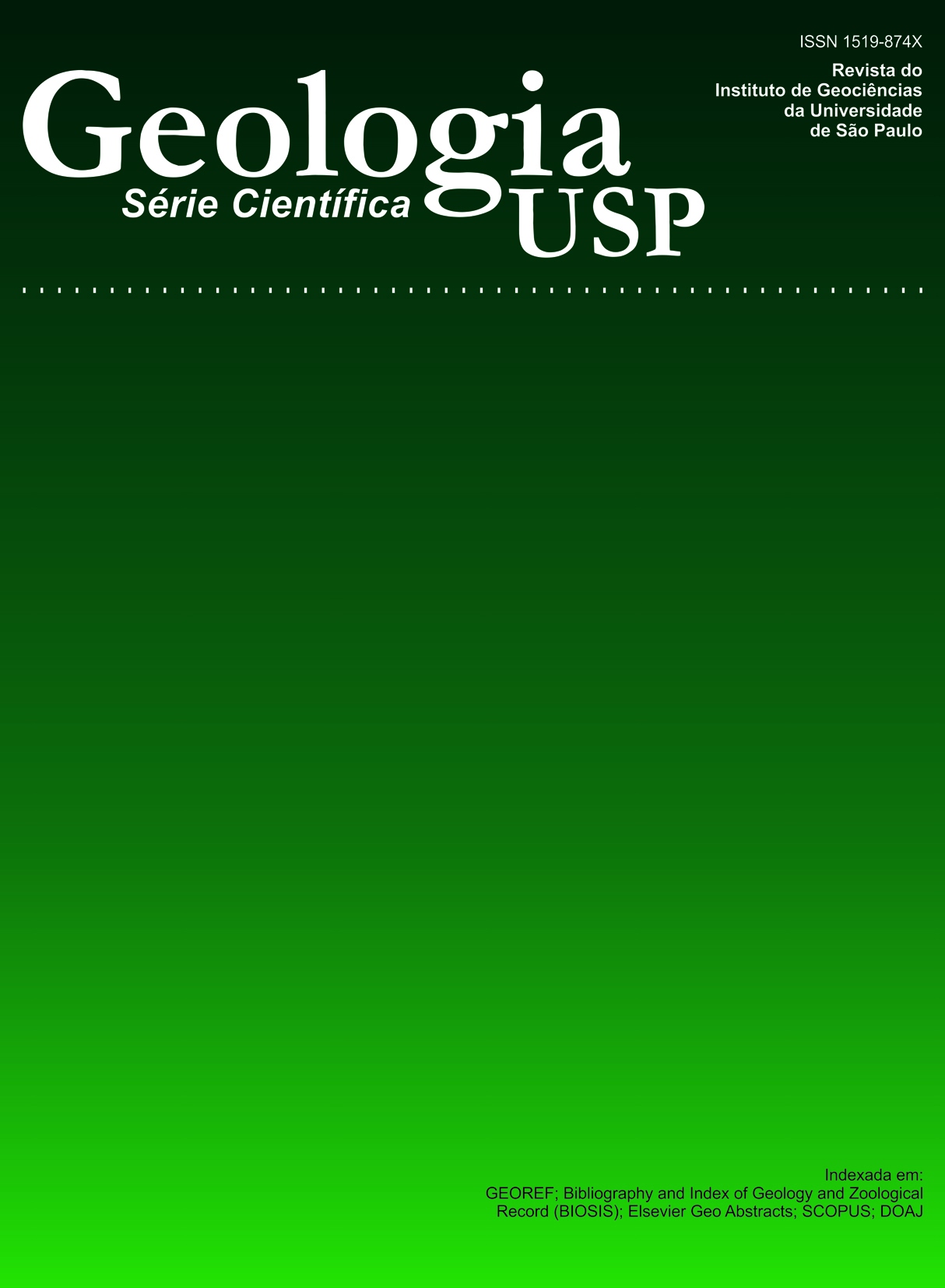Dyke swarms of the Paraná triple junction, southern Brazil
DOI:
https://doi.org/10.5327/Z1519-874X2008000200003Keywords:
dyke swarms, Southern Brazilian occurrences, petrography, chemistry, geochronologyAbstract
This work intends primarily to survey the field, mineralogical and petrographic characters of the mafic dykes which occur on a stretch of 650 km along the Southeastern coast of Brazil, between the city of São Sebastião, and the island of Santa Catarina. New chemical and geochronological data are also presented. The coastal dyke swarms are envisaged as the northern and southern arms of a plume-generated triple junction system centered on the Paraná State coast, and related to the initial opening of the South Atlantic. Mafic magma intruded as dyke swarms along three directions: N-S (the southern arm, along the Paraná-Santa Catarina coast), NW-SE (Ponta Grossa arch) and NE-SW (the northern arm along the São Paulo coast). Fifty two dykes, almost all tholeiitic diabases, were mapped and sampled along the south arm coast. The Ponta Grossa arch dykes are chiefly composed of tholeiitic diabases and lesser intrusions of andesitic to rhyolitic composition. Over 240 dykes were sampled and identified along the north arm west of São Sebastião. Lamprophyres are here abundant, followed by diabases, microdiorite porphyries and lesser amounts of trachy-andesite, carbonatite and Precambrian dykes. Special attention was given to the study of lamprophyres, their field appearance relative abundance, mineral and chemical composition, enclaves and relations to neighboring alkaline intrusions.Downloads
Download data is not yet available.
Downloads
Published
2008-10-01
Issue
Section
Articles
License
Authors who publish in this journal shall comply with the following terms:
- Authors keep their copyright and grant to Geologia USP: Série Científica the right of first publication, with the paper under the Creative Commons BY-NC-SA license (summary of the license: https://creativecommons.org/licenses/by-nc-sa/4.0 | full text of the license: https://creativecommons.org/licenses/by-nc-sa/4.0/legalcode) that allows the non-commercial sharing of the paper and granting the proper copyrights of the first publication in this journal.
- Authors are authorized to take additional contracts separately, for non-exclusive distribution of the version of the paper published in this journal (publish in institutional repository or as a book chapter), granting the proper copyrights of first publication in this journal.
- Authors are allowed and encouraged to publish and distribute their paper online (in institutional repositories or their personal page) at any point before or during the editorial process, since this can generate productive changes as well as increase the impact and citation of the published paper (See The effect of Open Access and downloads on citation impact).
How to Cite
Coutinho, J. M. V. (2008). Dyke swarms of the Paraná triple junction, southern Brazil . Geologia USP. Série Científica, 8(2), 28-52. https://doi.org/10.5327/Z1519-874X2008000200003





